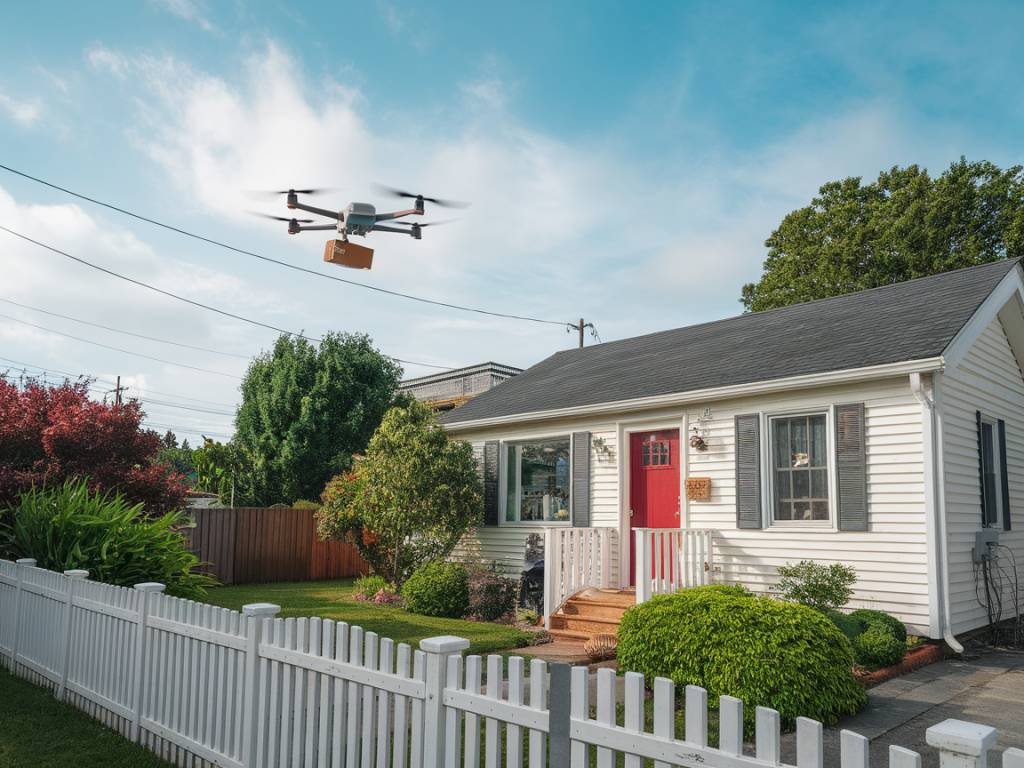Amazon has consistently been at the forefront of innovation, especially in the realm of logistics and supply chain management. One of their most talked-about initiatives in recent years has been the deployment of drones for last-mile delivery. This article delves into the intricate details of how Amazon drones are poised to revolutionize last-mile delivery, the challenges that accompany this technological advancement, and the potential benefits to both consumers and businesses.
The Concept of Last-Mile Delivery
Last-mile delivery refers to the final step of the delivery process, where goods are transported from a distribution center to the end customer. This segment of the delivery chain is often the most complex and costly part, accounting for more than 53% of overall shipping costs. The challenges are manifold: traffic congestion, labor costs, geographical constraints, and the ever-increasing demand for faster delivery times.
The Advent of Amazon Drones
Amazon’s vision for drone delivery was first introduced in 2013 with their Amazon Prime Air service. The concept is simple yet groundbreaking: use autonomous drones to deliver packages weighing up to 5 pounds within 30 minutes of an order being placed. While the weight limit may seem restrictive, it’s important to note that a significant percentage of Amazon’s total shipments fall under this category.
How Amazon Drones Work
Technology and Design
Amazon drones are designed with advanced technology to ensure efficient and safe delivery. They are equipped with GPS systems, high-definition cameras, and sophisticated sensors to navigate and avoid obstacles. Additionally, they use machine learning algorithms to optimize flight paths and delivery routes.
Operational Workflow
The operational workflow for Amazon drones involves several steps:
- An order is placed online.
- The item is fetched from the fulfillment center.
- The package is loaded onto the drone based on its destination.
- The drone flies to the delivery location autonomously.
- Upon arrival, the drone scans the area to identify a safe landing spot.
- The package is dropped at the specified location.
Advantages of Drone Delivery
The introduction of drones in last-mile delivery presents numerous potential benefits:
- Reduced Delivery Times: Drones can bypass traffic and take more direct routes, significantly cutting down delivery times.
- Cost Efficiency: While the initial investment is high, the long-term operational costs are expected to be much lower compared to traditional delivery methods.
- Environmental Impact: Electric drones produce zero emissions, making them an eco-friendly alternative.
- Enhanced Customer Satisfaction: Faster and more reliable deliveries can significantly improve customer satisfaction.
Challenges and Limitations
Despite its promising potential, drone delivery faces several challenges and limitations:
- Regulatory Hurdles: The deployment of drones on a large scale requires regulatory approval from aviation authorities. In the United States, the Federal Aviation Administration (FAA) has stringent rules governing the commercial use of drones.
- Technical Limitations: Battery life, payload capacity, and range are some of the technological constraints that limit the efficiency of drone delivery.
- Safety Concerns: Ensuring the safety of the drones and the areas they operate in is paramount. This includes mitigating risks related to accidents, theft, and vandalism.
- Weather Conditions: Drones are vulnerable to adverse weather conditions such as strong winds, rain, and extreme temperatures, which can affect their performance.
Real-World Applications
Amazon has conducted several pilot programs to test the feasibility of drone delivery:
- United Kingdom: In 2016, Amazon completed its first successful drone delivery in Cambridge, delivering a package in 13 minutes.
- United States: Amazon has been working closely with the FAA to expand its testing and operational capabilities within the country.
- Other Countries: Trials have also been conducted in countries like Australia and Israel to explore the global applicability of drone delivery.
The Future of Drones in Logistics
The landscape of last-mile delivery is evolving rapidly, and drones are likely to play a pivotal role in shaping its future. Advances in technology and regulatory frameworks will be critical in determining the scalability and feasibility of drone delivery systems.
In the coming years, it is anticipated that drones will not only deliver small packages but may also be integrated into other aspects of supply chain operations such as inventory management, real-time tracking, and emergency response logistics. Companies will need to invest in infrastructure and technology to fully harness the potential of drone delivery.
While skepticism and uncertainties remain, the momentum behind drone technology is undeniable. As Amazon and other pioneers continue to push the boundaries, the dream of a drone-filled sky delivering packages swiftly and efficiently might soon become a reality.
Amazon’s use of drones for last-mile delivery represents a groundbreaking shift in logistics. Despite facing regulatory, technical, and safety challenges, the potential benefits—including reduced delivery times, cost efficiency, and environmental sustainability—are substantial. As technology advances and regulatory frameworks evolve, the dream of efficient, drone-based delivery systems is becoming increasingly feasible, promising a revolutionary impact on the logistics sector.
